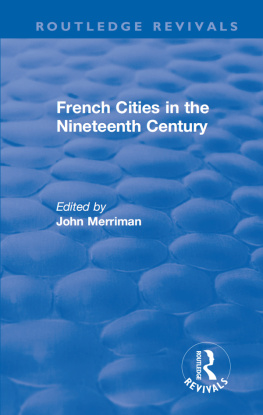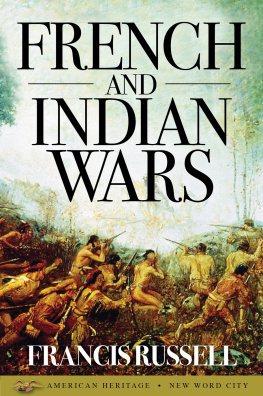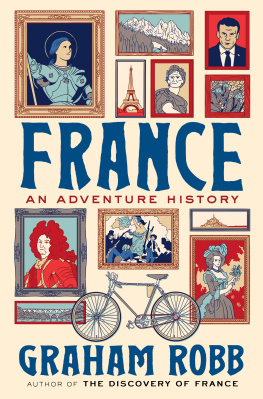PENGUIN BOOKS
LA VIE EN BLEU
Rod Kedward has spent much of his career studying Occupied France and the Resistance, and is the author of the remarkable Resistance in Vichy France and In Search of the Maquis, which won the Philippe Viannay Prize in France. He has also written books on the Dreyfus Affair, Fascism in western Europe and the Anarchists. He has been honoured by the French government and taught for many years at the University of Sussex, where he is now Emeritus Professor.
LA VIE EN BLEU
FRANCE AND THE FRENCH SINCE 1900
ROD KEDWARD

PENGUIN BOOKS
PENGUIN BOOKS
Published by the Penguin Group
Penguin Books Ltd, 80 Strand, London WC2R 0RL , England
Penguin Group (USA) Inc., 375 Hudson Street, New York, New York 10014, USA
Penguin Group (Canada), 90 Eglinton Avenue East, Suite 700, Toronto, Ontario, Canada M4P 2Y3
(a division of Pearson Penguin Canada Inc.)
Penguin Ireland, 25 St Stephens Green, Dublin 2, Ireland (a division of Penguin Books Ltd)
Penguin Group (Australia), 250 Camberwell Road, Camberwell, Victoria 3124, Australia
(a division of Pearson Australia Group Pty Ltd)
Penguin Books India Pvt Ltd, 11 Community Centre, Panchsheel Park, New Delhi 110 017, India
Penguin Group (NZ), cnr Airborne and Rosedale Roads, Albany, Auckland 1310, New Zealand
(a division of Pearson New Zealand Ltd)
Penguin Books (South Africa) (Pty) Ltd, 24 Sturdee Avenue, Rosebank, Johannesburg 2196, South Africa
Penguin Books Ltd, Registered Offices: 80 Strand, London WC2R 0RL , England
www.penguin.com
First published by Allen Lane 2005
Published in Penguin Books 2006
4
Copyright H. R. Kedward, 2005
All rights reserved
The moral right of the author has been asserted
Except in the United States of America, this book is sold subject to the condition that it shall not, by way of trade or otherwise, be lent, re-sold, hired out, or otherwise circulated without the publishers prior consent in any form of binding or cover other than that in which it is published and without a similar condition including this condition being imposed on the subsequent purchaser
ISBN-13: 978-0-140-13095-9
Contents
List of Illustrations
Jean Jaurs (Corbis)
Champagne demonstrators in 1911 (Corbis)
French reservists ouside the Gare du Nord (Corbis)
African soldiers in a trench (Corbis)
Pile of human bones from the Battle of Verdun (Corbis)
The victors of the First World War at Versailles (Corbis)
Quintet of the Hot Club de France (Corbis)
Marshal Ptain at a war commemoration (Corbis)
Leon Blum at an outdoor rally (Corbis)
Spanish refugees arriving by boat (Corbis)
Refugees in the exode of 1940 (Corbis)
German check point on the demarcation line
Resistance group at Kersaint near Brest
Woman with head shaved at the Liberation
Simone de Beauvoir (Corbis)
Albert Camus (Corbis)
Genevive de Galard Terraube with wounded soldier (Corbis)
Charles de Gaulle and Konrad Adenauer (Corbis)
Algerian man celebrating (Corbis)
Charles de Gaulle and Alain Peyrefitte at Muroroa (Corbis)
Prototype of Concorde (Corbis)
Young woman injured in 1968 clashes (Corbis)
Workers occupy Renault factory (Corbis)
Simone Veil in 1979 (Corbis)
Catherine Deneuve in Belle de jour (Corbis)
Shanty town (bidonville) in 1973 (Corbis)
Kanak women and military police in New Caledonia (Corbis)
Jacques Chirac in 1975 (Corbis)
Franois Mitterrand and Helmut Kohl (Corbis)
Girls with Muslim headscarves at a school in Lille (Corbis)
Front National candidate Jean-Marie Le Pen (Corbis)
Martine Aubry in 2001 (Corbis)
Demonstrators against Le Pen (Corbis)
Every effort has been made to trace the copyright holders and we apologize in advance for any unintentional omission. We would be pleased to insert the appropriate acknowledgement in any subsequent editions.
List of Maps
Preface
On a late summers day in September 2004 I found myself in the Loire town of Tours. Banners and tricolore flags in the centre proclaimed the sixtieth anniversary of the Liberation of France, and concurrently the centenary of the neo-Renaissance town hall designed by Victor Laloux, architect of the Gare dOrsay in Paris. In tandem, the town hall and the railway station had mounted a display of photographs to celebrate the Liberation of Tours itself on 1 September 1944 and the genesis of the local paper, La Nouvelle Rpublique, created by the Socialist deputy Jean Meunier during the Resistance. In front of Lalouxs Htel de Ville lies the Place Jean Jaurs, and the year 2004 was also the centenary of LHumanit, the paper created by the Socialist leader Jaurs in 1904 and inherited by the French Communist Party, formed in 1920 at the congress held in Tours.
All anniversaries provoke comments on the present. The sepia photographs of the Allied destruction of the railway in Tours on the night of 21 May 1944, in the raids which preceded the D-Day landings, gave prominence to the civilian deaths and to the ruined streets devastated by bombs which missed their target. A discreet caption under one of the photographs read: Today this would be called collateral damage.
Earlier in the year I had attended the Franco-British ceremonies of the centenary of the Entente Cordiale, and there were billowing banderoles proclaiming the Entente still in place in Beaulieu, close to Nice, when I was there shortly after Tours. The sixty years since the D-Day landings and the Liberation did not displace the ninetieth anniversary of the declaration of war in 1914, nor the fifty years since the fall of Dien Bien Phu in Indo-China and the outbreak of the war in Algeria. Away from wars the womens magazine Marie-Claire celebrated fifty years since its relaunch as a monthly in October 1954, and in a special issue stressed its persistent aim to enhance the lives of women through fashion, health, exercise, labour-saving devices and a happy house and home, but also its commitment to contraception and legal abortion, and its role in lifting the taboo surrounding female homosexuality. Here, in this special issue, there was not only an anniversary but an intriguing set of narratives. No less was true for all the other commemorations which tumbled over one another during the year.
Rituals of everyday life and obituaries of public figures carried other narratives of custom, place, and people. On the same visit to Nice I heard as usual the cannon shot which echoes round the Baie des Anges to signal midi (noon) on working days. It expresses, like the few surviving factory hooters elsewhere, a threatened but resilient narrative of the long midday closure, a cultural fact, or remnant of a way of life, which still characterizes much of contemporary France. Deaths in the summer and autumn included the great photographer Henri Cartier-Bresson who died on 3 August, while on 24 September the death was announced of Franoise Sagan, born Franoise Quoirez, author of the record-breaking first novel Bonjour Tristesse in 1954. On 8 October it was the brilliantly original philosopher, Jacques Derrida, who died. The specific narratives evinced by the obituaries triggered countless others: everyone with a camera knew what Cartier-Bresson meant by the decisive moment; it seemed that most people remembered the exact place in which they read
Next page










